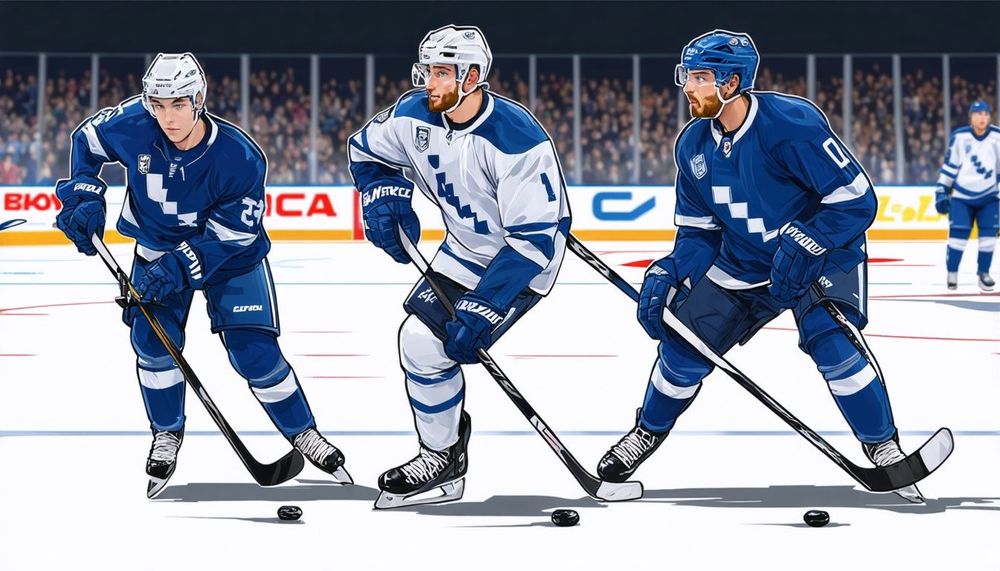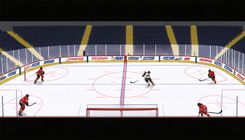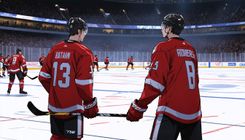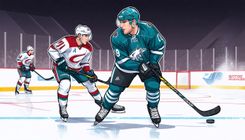NHL Prospect Pool Rankings: An In-Depth Analysis

The ranking of prospect pools in the NHL has generated various observations, particularly the consistency seen at the top tier. As expected, certain teams have dominated the discussions surrounding their prospects. However, a notable trend this year has been the discrepancy between teams' standings and their prospect pool quality, with several contenders not performing as anticipated based on their developmental systems. Factors contributing to these outcomes may include trades, prospects graduating to the NHL, and others not meeting expectations. The rankings reveal clusters of teams that share similarities in their prospect health, indicating a more tiered approach rather than a linear ranking. Methodology relies on several criteria, including the addition of newly drafted players, trades, the development trajectory of existing players, and projections for their upcoming seasons. As we move forward, it will be intriguing to observe how these dynamics evolve as players continue to develop.
When evaluating prospect pools, 'prospect' is defined as any player entering the 2025-26 season with less than one full NHL season, allowing for slight deviations for players with minimal NHL exposure. The Florida Panthers find themselves at the bottom of the rankings despite winning the Stanley Cup two consecutive years. While they are less than optimized in terms of prospects, there are still bright spots worth mentioning. Among those, Jack Devine, a right wing from the University of Denver, displayed potential in his brief AHL stint last year. With strong skating abilities, he could make an impact as he strives for a full AHL season. Additionally, Gracyn Sawchyn, moving from the Edmonton Oil Kings to the AHL, is expected to showcase his hockey IQ and determination. The Panthers might consider leveraging these talents to augment their NHL roster as they pursue another championship run.
The Vancouver Canucks' prospect pool leaves much to be desired, mainly comprising depth options without the top-level impact players necessary for a competitive advantage. Jonathan Lekkerimaki remains a significant asset; however, the Canucks must ensure they provide him with a supportive environment to succeed. His exceptional skills need to be complemented by a solid team framework to facilitate his development. Defensive prospect Tom Willander is transitioning from Boston University to the pros, and although he appears to possess the qualities needed for NHL success, his journey with Vancouver will be pivotal. Braeden Cootes, a promising player acquired during the 2025 Draft, adds to the potential but warrants careful development to unlock his full capabilities. As such, the Canucks are focused on establishing a balance of depth and high-caliber talent to revitalize their overall standing.
The prospect pools of the Los Angeles Kings and Ottawa Senators exhibit varying profiles of potential. Liam Greentree's performance in the recent season—119 points in 64 games—marks him as a player warranting AHL exception consideration, exemplifying the flowering talent in the Kings’ system. However, the general condition of their pool reveals most promising players have outgrown their prospects status. With Kristian Epperson transitioning to the University of Denver and Henry Brzustewicz beginning to ascend the depth chart of the London Knights, the potential for exciting growth exists. The Senators are also grappling with their own challenges; Logan Hensler's freshman season was met with ups and downs, though his ongoing development could benefit from more experience. Carter Yakemchuk, already seasoned in the WHL, is ready for the next competitive challenge in the AHL, where his playmaking could shine and provide uplift for Ottawa's prospect system.
Turning to the Toronto Maple Leafs, the state of their prospect pool raises concerns, particularly in the wake of playoff disappointments. Despite lacking depth to show for their past draft struggles, players like Ben Danford exhibit the potential to make their mark if given the opportunity. Easton Cowan, expected to make his NHL debut this season, may face challenges adapting to the intense environment of the Maple Leafs compared to the junior ranks. The intricacies of team dynamics will play a crucial role in Cowan’s development. The Boston Bruins, conversely, are witnessing a turnaround in their rankings primarily due to notable prospects such as James Hagens. Recent drafts have shown promise, adding notable depth that combines both skill and strategic prowess, particularly with Fraser Minten joining their ranks as well.
The Winnipeg Jets present an interesting prospect situation. Brad Lambert is nearing a crucial turning point in his career, and his past performance has displayed flair that could shine in a new setting. Brayden Yager's transition from the Pittsburgh Penguins, coupled with emerging talent like Sascha Boumedienne, can impact the Jets positively if managed correctly. This trio represents the depths of potential that might be unlocked with more exposure and opportunity. The Edmonton Oilers, while possessing marquee prospects like Matthew Savoie and Isaac Howard, must continue to navigate their selections wisely to avoid falling in the rankings. Providing Howard ample AHL time this season could significantly hone his skills before stepping into the NHL full-time. In contrast, the Vegas Golden Knights' prospect pool appears sporadic, with promising players like Matyas Sapovaliv showing flashes of promise needing further refinement. Jakob Ihs-Wozniak has potential as well, and the Knights would benefit from extra focus on development in the coming seasons.
The Dallas Stars have unveiled new talents, with Emil Hemming and Lian Bichsel emerging as key figures. Hemming's shift to the OHL has showcased his skill, while Bichsel's transition raises expectations for his performance moving forward. The Tampa Bay Lightning, in their recovery phase after depleting their cupboards for championship runs, retain key prospects. Players like Sam O'Reilly, with strong engagement metrics, could make worthy contributions in the AHL, and the opportunity for growth has arisen. The New York Rangers face both challenges and benefits, with Gabe Perreault standing out as a defining prospect. His playmaking instincts could bode well for their roster, while other players like Scott Morrow bring additional depth to the team's development pipeline.
The Colorado Avalanche are experiencing a boost in their prospect pool thanks to the acquisition of Gavin Brindley and Ilya Nabokov. Their advancing talents are crucial for the organizational growth, while the New Jersey Devils have maintained a stable pool with solid contributions from players like Seamus Casey and Anton Silayev. The new franchise, Utah Mammoth, showcases promising prospects like Tij Iginla and Caleb Desnoyers, indicating a positive direction since their relocation. The Buffalo Sabres have struggled with their roster management; however, players like Radim Mrtka and Konsta Helenius have offered glimmers of hope amidst rebuilding efforts. The Pittsburgh Penguins' upward trajectory in rankings stems from strategic drafting, highlighted by the addition of Rutger McGroarty and Bill Zonnon into the fold. Their development will be watched closely as they enhance their NHL presence.
The St. Louis Blues remain steady with Dalibor Dvorsky leading the charge, even amid roster fluctuations. The Maple Leafs' earlier draft acquisitions, including Justin Carbonneau and Jimmy Snuggerud, add to their future prospects. The Nashville Predators have revamped their outlook with talents like Brady Martin and Ryker Lee, projecting strength in the coming seasons. Detroit Red Wings' draft classes show promising prospects, particularly Carter Bear, while continuing a mixed development path. The Minnesota Wild are in a transition period where Zeev Buium shines as the standout prospect, supported by a cadre of talented players ready to challenge for NHL roster spots. The Chicago Blackhawks maintain depth through intelligent acquisitions, notably Nick Lardis and Artyom Levshunov, creating a foundation for future success. Finally, the Montreal Canadiens are capitalizing on impactful drafting strategies while preparing for the integration of Ivan Demidov and David Reinbacher into their ranks.
The San Jose Sharks have retained their number one ranking in prospect pools, bolstered significantly by the selection of Michael Misa. Their ability to create a cohesive and complementary core will be pivotal in the organization’s future success. The depth around Misa includes Quentin Musty and Sam Dickinson, each possessing the potential to shape the Sharks' gameplay.









